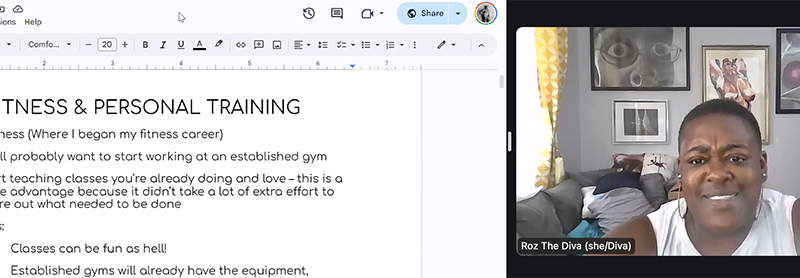[memberonly level=“Group Membership for Businesses of 2-5 individuals, Student, Individual or Solo-Preneur”] Please note that…

Do you have a sales process for your pole dance business?
Sales and marketing are important parts of running a business.
Most pole dance businesses are great at actions that are traditionally considered marketing such as using your email list, being active on social media (or even using paid ads), working with affiliates and more.
But how many pole dance businesses have an active sales process?
We’ll look at what that means, give you some tips to defining your sales process, and how to share this information with your staff (if relevant).
What is a sales process?
A sales process is going to differ depending on the details of your pole dance business such as the size of your business, typically cost of working with your business, and your growth goals. At its most basic, a sales process is how people spend money at your business from deciding to make the first purchase to becoming a customer for life.
Effective marketing can help get clients to sign up for their first class or become aware of your apparel line, but an active sales process can help keep them returning again and again or sign up for higher value products or services.
How to create your sales pitch?
Start your sales process by understanding what you really sell.
Sure, you might sell cute clothes or pole dance tutorials but really, what are people buying from you? Are they buying confidence? Are they buying an experience? Most people are buying something more ethereal than a fitness class or a new shoe. Understand what you’re selling so you can craft your pitch around that.
A sales pitch (also known as an elevator pitch) should be a short way of explaining what you offer and why people buy. It could be spoken or written and should accurately and genuinely represent your business and what you sell.
How to create your sales process?
Once you have your pitch, think about who you’re selling to and how they are going to find your business.
This can also be called your customer’s journey and is how they discover your business, decide to make a purchase, and then continue to make purchases.
You’ll want to think about things like:
- Where does this potential customer get information?
- What kind of information is important to them when making a purchasing decision?
A marketing funnel is a common way to explain the research process a customer may go through when deciding to learn more about your business and how you can passively interact with them through a series of predetermined interactions.
This process becomes more active and moves from marketing to sales, with your sales process. Your sales process starts when a real human actively starts to talk to a real potential customer.
This process may be driven by your potential customer such as including a button or a link in a marketing email that says “to schedule a time to talk about starting your membership” or “to create a wholesale account” which starts the process of talking to a real human who is going to use the sales pitch to sell the potential customer on your product or service and also answer questions they may have about interacting with your business.
This process may be driven by your business such as when someone enters your marketing funnel, they get a phone call or text where they talk to a real person to ask about their needs. If might also be driven during in person events where face-to-face conversations and networking are common like attending a local bridal show to get more party-related business or when attending a pole industry focused event like a pole competition or PoleCon, (IPIA members receive a discount to attend. Not a member? Join today!).
How to train your staff on your sales process?
If you have a staff at your business, it’s critical that they understand how to implement your sales process, how it works with your marketing process, and why it’s important.
Here are some tips to train your staff in your process:
- Be clear about staff’s role in sales. Maybe not every staff person is required or expected to sell whereas others might have that task as a critical part of their role.
- Create scripts for how to sell that they can use. Scripts can sometimes seem impersonal, so be clear about what parts can be changed and which parts need to stay the same. Offer lots of options for common reasons people don’t buy and how to address them.
- Practice using role-playing. Selling is not natural for everyone, practice using the scripts until your employees are comfortable in a real situation.
- Make sure they understand how to track any information they receive about your potential customer’s buying decisions so you can contribute to follow up with them or learn new ways to improve your process. One way to track this is using a CRM system.
For many pole businesses with lower priced products and services, a sales process may not be relevant or even possible to implement.
Usually, larger purchases or longer commitments such as an annual membership to your studio or spending thousands of dollars on a wholesale account may necessitate a sales process that directly and actively engages with your potential customers. Review your business and see if adding a sales process is an appropriate and manageable way for your business to grow.



